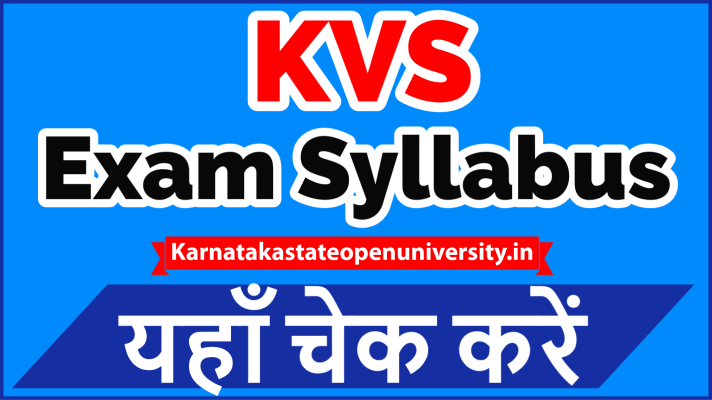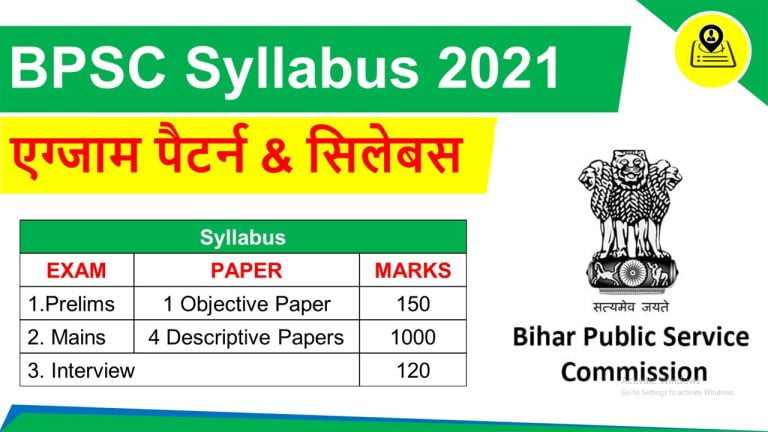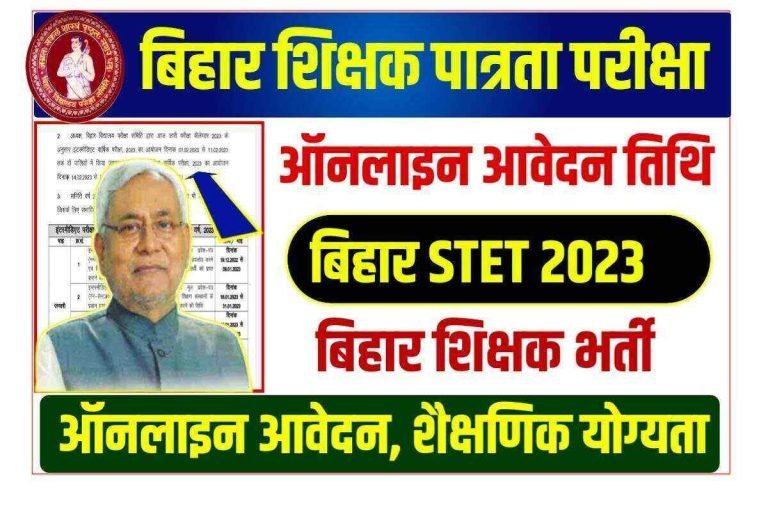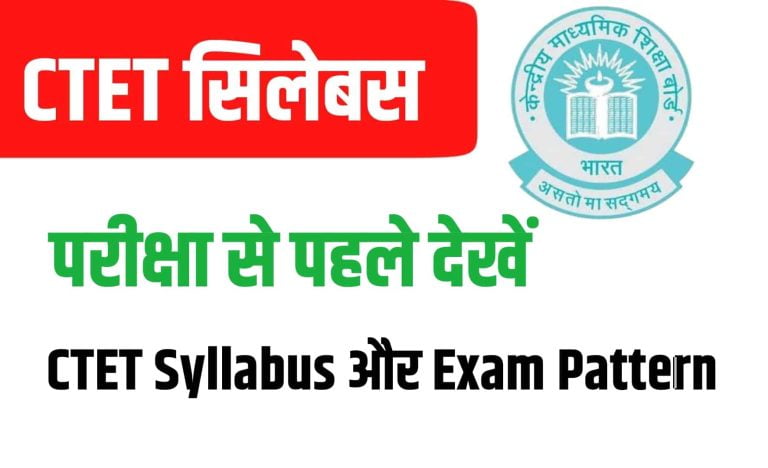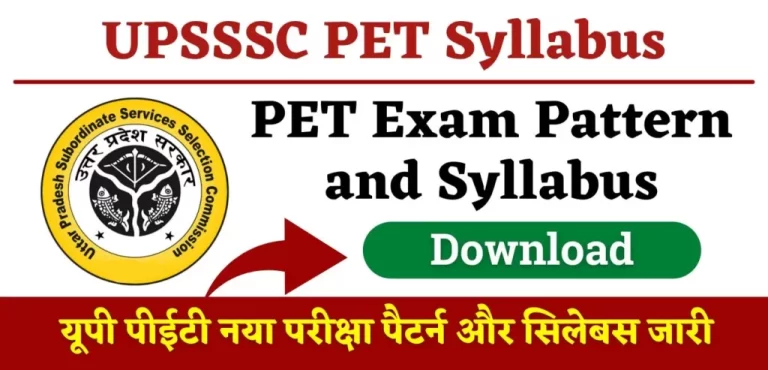KVS Syllabus 2022
KVS Syllabus 2022 For PRT, TGT, PGT
To check complete KVS Syllabus 2022 For TGT, PGT, PRT Posts With New Exam patterns. Candidates can download the Detailed Latest KVS Syllabus 2022 For TGT, PGT, PRT Posts in PDF form.
KVS सिलेबस 2022: KVS सिलेबस 2022 केंद्रीय विद्यालय संगठन (KVS) द्वारा TGT, PRT और PGT पोस्ट के लिए जारी किया गया है। KVS ने शिक्षण और गैर-शिक्षण रिक्तियों के लिए 13,404 रिक्तियां जारी की हैं। केवीएस ने शिक्षण और गैर-शिक्षण रिक्तियों के लिए संशोधित केवीएस पाठ्यक्रम और परीक्षा पैटर्न जारी किया है। सभी उम्मीदवार जो KVS परीक्षा की तैयारी कर रहे हैं, उन्हें पाठ्यक्रम और परीक्षा पैटर्न की विस्तृत जानकारी होनी चाहिए।
KVS New Syllabus 2022
उम्मीदवारों को KVS 2022 परीक्षा में बैठने से पहले इसके विस्तृत KVS नए पाठ्यक्रम 2022 को पढ़ना चाहिए। KVS 2022 परीक्षा को क्रैक करने के लिए, आपको सबसे पहले संपूर्ण KVS संशोधित पाठ्यक्रम 2022 को पढ़ना होगा और परीक्षा में बार-बार पूछे जाने वाले प्रत्येक विषय पर ध्यान केंद्रित करना होगा।
KVS Syllabus 2022 Overview
यह एक अपरिहार्य कार्य है क्योंकि यह यह स्वीकार करने में मदद करता है कि क्या अध्ययन करना है, हमें अध्ययन करने के लिए पूरी सामग्री को कवर करने की रणनीति कैसे बनानी है और परीक्षा के दृष्टिकोण से अनावश्यक गलतियों से कैसे बचना है। इस वर्ष के इंतजार के बाद, केवीएस ने केवीएस स्कूलों के लिए टीचिंग और नॉन-टीचिंग रिक्तियों को जारी किया है। महत्वपूर्ण केवीएस पाठ्यक्रम अद्यतन संक्षिप्त में नीचे सूचीबद्ध है।
| KVS Teacher Syllabus 2022 | |
| Description | Details |
| Board Name | Kendriya Vidyalaya Sangathan (KVS) / केन्द्रीय विद्यालय संगठन |
| Posts Name | Principal, Vice Principal, TGT, PGT, Librarian, Primary Teacher |
| KVS Teacher Vacancies | 13,404 |
| Category | KVS Teacher Syllabus |
| KVS Exam date 2022 | Notified Soon |
| KVS Official Website | @kvsangathan.nic.in |
केवीएस सिलेबस 2022 और पीआरटी के लिए परीक्षा पैटर्न
KVS ने प्राथमिक शिक्षक (PRT), TGT और PGT पदों के लिए 13,404 रिक्तियां जारी की थीं। अब KVS परीक्षा के लिए अपनी तैयारी शुरू करने का सही समय है। इस लेख में, हम KVS PRT सिलेबस 2022 PDF और परीक्षा पैटर्न को विस्तार से साझा करने जा रहे हैं। उम्मीदवारों का चयन ऑनलाइन कंप्यूटर आधारित परीक्षा (सीबीटी) और साक्षात्कार के अंकों के आधार पर होगा। इच्छुक उम्मीदवार नीचे दिए गए लिंक से केवीएस पीआरटी, पीजीटी और टीजीटी पाठ्यक्रम पीडीएफ 2022 डाउनलोड कर सकते हैं और इसे भविष्य की तैयारी के लिए सहेज सकते हैं।
(1) कुल अंक -180
(2) प्रश्नों की कुल संख्या- 180
(3) समय – 3 घंटे = 180 मिनट
(4) परीक्षा का माध्यम- अंग्रेजी/हिंदी (द्विभाषी)
(6) प्रश्नों के प्रकार – वस्तुनिष्ठ प्रकार
KVS PRT Exam Pattern
| KVS Exam | KVS Subjects | Number Of Ques. | Total Marks |
|---|---|---|---|
| PART- I | General English | 10 | 10 |
| General Hindi | 10 | 10 | |
| PART-II |
General Awareness & Current Affairs | 10 | 10 |
| Reasoning Ability | 5 | 5 | |
| Computer Literacy | 5 | 5 | |
| PART-III | Perspectives on Education and Leadership | 60 | 60 |
| PART-IV | Subject Concerned | 80 | 80 |
| Total | 180 | 180 |
KVS Teacher Vacancies 2022 Check Details Here
KVS PRT Syllabus 2022
KVS Primary teacher syllabus is wide so every candidate must read this table before starting the preparation. As per the latest KVS Notification, KVS New PRT Syllabus has been changed and the below table is updated with KVS PRT Syllabus 2022.
| KVS PRT Syllabus (General paper) | ||
| TEST | SUBJECTS | Detailed Syllabus |
| PAPER I | General English | Reading Comprehension, Word Power, Articles, Narrations, Prepositions, Punctuations, Comprehension, Fill in the Blanks. Adverb, Error Correction, Sentence Rearrangement, Vocabulary, Antonyms, Synonyms, Idioms, Verbs, Tenses, adjectives, modal, Voice, Subject-Verb Agreement |
| General Hindi | भाषा, संज्ञा, सर्वनाम एवं सर्वनाम, विशेषण, क्रिया, अव्यय, वचन, लिंग, उपसर्ग एवं प्रत्यय, वाक्य निर्माण, पर्यायवाची, विपरीपार्थक, अनेकार्थक, समानार्थी शब्द, विराम चिन्हों की पहचान एवं उपयोग, मुहावरे एवं लोकोक्तियाँ, अलंकार, सन्धि, तत्सम, तद्भव, देशज एवं विदेशी शब्द, समास,पठन कौशल, शब्द सामर्थ्य | |
| PAPER-II |
General Knowledge & Current Affairs | Awards, Books & their authors, Sports, History- Ancient, Medieval & Modern, Geography, Current Affairs, Polity, Population Census, Indian Art & Culture, Misc. |
| Reasoning Ability | Mirror Image, Directions, Puzzles, and Seating Arrangement, Syllogism, Data Sufficiency, Coding-decoding, Blood Relation, Order and Ranking, Alpha Numeric Symbol Series, Logical Reasoning | |
| Computer Literacy | Abbreviations, Basic Computer Terminology & Shortcuts, Web Technology, Database Management Systems, Browsers, and Search Engines, Internet, General Concept of Social Networking, Computer Memory or Storage Devices, Computer Software & Hardware, History and Evaluation of Computers, Generations, and Types of Computers, Operating Systems | |
| Paper -III | Perspectives on Education and Leadership | (a) Understanding the Learner
(b) Understanding Teaching Learning
c) Creating Conducive Learning Environment
(d)School Organization and Leaders-hip
(e)Perspectives in Education
|
| Paper – IV | Subject Concerned | The detailed subject concerned syllabus is given below: |
KVS PRT 2022 Exam: Subject Wise Tips and Strategy
KVS PRT Syllabus 2022 [Subject Concerned]
| KVS PRT Syllabus (Subject Concerned) | ||
| Hindi | व्याकरणः संज्ञा, विशेषण और वचन की पहचान और व्यावहारिक प्रयोग, गणित के पाठ्यक्रम पाठ्यक्रम के अनुरूप हिन्दी में संख्याएँ, सनयुक्ताक्षरों की पहचान, पर्याय और विलोम ( स्तरानुकूल), सर्वनाम और लिंग की पहचान, विशेषण का संज्ञा के साथ सुसंगत प्रयोग, वचन वचन का प्रयोग, क्रिया, काल और कारक चिन्हों की पहचान, शब्दों के संदर्भ में लिंग का प्रयोग प्रयोग | |
| English | Nouns, pronouns, adjectives, adverbs, is, am, are, has, have, tense forms (Simple present and present continuous, simple past and past continuous), expressing future (will and be going to), articles, this, that, these, those (as determiners and empty subjects), question words, an, or, but, punctuation marks (full stop, comma, question mark and inverted commas), possessive adjectives, prepositions | |
| Mathematics | Geometry: Shapes & Spatial Understanding, Solid Around Us, Numbers: Developing A Sense Of Number, Counting And Operations Of Numbers, Addition And Subtraction, Multiplication, Division, Mental Arithmetic, Fractional Numbers, Money, Measurement, Length, weight, Capacity (Volume), Time, Data Handling, Patterns. | |
| Environmental Science | Family And Friends, Food, Shelter, Water, Travel, Things We Make And Do | |
KVS PRT Music Syllabus
KVS PRT music syllabus is the other most important and vital subject in this exam. To check the complete KVS PRT Music syllabus 2022 read the below table attentively. In this table, we have explained each and every subject in KVS PRT Exam with music subject.
| KVS Exam | KVS Subjects | Number Of Ques. | Total Marks | Duration |
|---|---|---|---|---|
| PART I | General English | 15 | 15 | 180 Minutes |
| General Hindi | 15 | 15 | ||
| PART II |
General Awareness & Current Affairs Related to Subject | 20 | 20 | |
| Reasoning Ability | 20 | 20 | ||
| Computer Literacy | 10 | 10 | ||
| PART III | Subject Concerned | 100 | 100 | |
| Total | 180 | 180 |
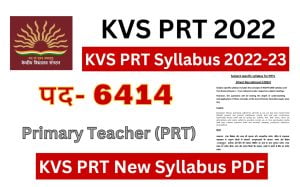
केवीएस टीजीटी पाठ्यक्रम 2022 और परीक्षा पैटर्न
केवीएस ने विभिन्न विषयों में प्रशिक्षित स्नातक शिक्षक (टीजीटी) रिक्तियों को जारी किया है: हिंदी, अंग्रेजी, संस्कृत, विज्ञान, गणित, सामाजिक अध्ययन, शारीरिक और स्वास्थ्य शिक्षा, कला और कार्य अनुभव। इस लेख में, हम KVS TGT सिलेबस 2022 और परीक्षा पैटर्न को विस्तार से साझा करने जा रहे हैं।
टीजीटी विषय: (हिंदी, अंग्रेजी, संस्कृत, विज्ञान, गणित, सामाजिक अध्ययन)
कुल अंक -180
प्रश्नों की कुल संख्या- 180
समय – 3 घंटे = 180 मिनट
परीक्षा का माध्यम- अंग्रेजी/हिंदी (द्विभाषी)
प्रश्नों के प्रकार – वस्तुनिष्ठ प्रकार
| KVS Exam | KVS Subjects | Number Of Ques. | Total Marks |
|---|---|---|---|
| PART- I | General English | 10 | 10 |
| General Hindi | 10 | 10 | |
| PART-II |
General Awareness & Current Affairs | 10 | 10 |
| Reasoning Ability | 5 | 5 | |
| Computer Literacy | 5 | 5 | |
| PART-III | Perspectives on Education and Leadership | 40 | 40 |
| PART-IV | Subject Concerned | 100 | 100 |
| Total | 180 | 180 |
KVS TGT Syllabus Subject wise (Physical & Health Education, Work Experience, Art Education)
- TGT Subjects:(Physical & Health Education, Work Experience, Art Education)
- Total Marks-180
- Total Number of Questions- 180
- Time – 3 Hours = 180 Minutes
- Medium of Examination- English/Hindi (Bilingual)
- Type of Questions – Objective type
| KVS Exam | KVS Subjects | Number Of Ques. | Total Marks |
|---|---|---|---|
| PART I | General English | 15 | 15 |
| General Hindi | 15 | 15 | |
| PART II |
General Awareness & Current Affairs Related to Subject | 20 | 20 |
| Reasoning Ability | 20 | 20 | |
| Computer Literacy | 10 | 10 | |
| PART III | Subject Concerned | 100 | 100 |
| Total | 180 | 180 |
KVS TGT Syllabus 2022
Follow the below table to know the latest KVS TGT Syllabus 2022 as per the latest KVS notification on the official website.
KVS TGT Syllabus 2022 |
||
| TEST | SUBJECTS | Detailed Syllabus |
| PAPER I | General English |
Articles, Modal , Narration, Pronoun, Adverb, Adjective, Verb, Preposition, Tenses, Punctuation, Voice, Vocabulary, Idioms & phrases, Antonym & Synonyms, Reading Comprehension, Word Power
|
| General Hindi |
भाषा, संज्ञा एवं संज्ञा के भेद, सर्वनाम एवं सर्वनाम के भेद, विशेषण एवं विशेषण के भेद, क्रिया एवं क्रिया के भेद, वचन, लिंग, उपसर्ग एवं प्रत्यय, वाक्य निर्माण (सरल, संयुक्त एवं मिश्रित वाक्य), पर्यायवाची, विपरीपार्थक, अनेकार्थक, समानार्थी शब्द, मुहावरे एवं लोकोक्तियाँ, अलंकार, सन्धि, तत्सम, तद्भव, देशज एवं विदेशी शब्द, समास, पद परिचय, पठन कौशल, शब्द सामर्थ्य
|
|
| PAPER-II |
General Knowledge & Current Affairs |
Awards, Books & their authors, Sports, History- Ancient, Medieval & Modern, Geography, Current Affairs, Polity, Economic, Constitution, Indian Art & Culture, Everyday Science, Scientific Research, National/International Organizations /Institutions
|
| Reasoning Ability |
Verbal and non-verbal types, analogies, similarities, Syllogism, space visualization, problem solving, Blood Relation, arithmetical reasoning, figure classification, Logical Reasoning, Mirror Image, Directions, Puzzles and Seating Arrangement, Data Sufficiency, Coding-decoding, Order and Ranking, Alpha Numeric Symbol Series
|
|
|
Computer Literacy
|
Abbreviations, Basic Computer Terminology & Shortcuts, Web Technology, Database Management Systems, Browsers and Search Engines, Internet, General Concept of Social Networking, Computer Memory or Storage Devices, Computer Software & Hardware, History and Evaluation of Computers, Generations and Types of Computers, Operating Systems
|
|
| Paper III | Perspectives on Education and Leadership | (a) Understanding the Learner
(b) Understanding Teaching Learning
c) Creating Conducive Learning Environment
(d)School Organization and Leaders-hip
(e)Perspectives in Education
|
| Subject Concerned | For Details Syllabus KVS Syllabus PDF 2022 | |
KVS PGT Syllabus 2022 & Exam pattern
- केवीएस ने पोस्ट ग्रेजुएट टीचर (पीजीटी) रिक्ति जारी की थी, जिसमें विषय शामिल थे: हिंदी, अंग्रेजी, भौतिकी, रसायन विज्ञान, गणित, जीव विज्ञान, इतिहास, भूगोल, अर्थशास्त्र, वाणिज्य और कंप्यूटर विज्ञान। नीचे दी गई तालिका में हमने सभी नवीनतम KVS PGT सिलेबस 2022 और नए परीक्षा पैटर्न को जोड़ा है।
पीजीटी विषय: (हिंदी, अंग्रेजी, भौतिकी, रसायन विज्ञान, गणित, जीव विज्ञान, इतिहास, भूगोल, अर्थशास्त्र, वाणिज्य और कंप्यूटर विज्ञान)
कुल अंक -180
प्रश्नों की कुल संख्या- 180
समय – 3 घंटे = 180 मिनट
परीक्षा का माध्यम- अंग्रेजी/हिंदी (द्विभाषी)
प्रश्नों के प्रकार – वस्तुनिष्ठ प्रकार
| KVS Exam | KVS Subjects | Number Of Ques. | Total Marks |
|---|---|---|---|
| PART- I | General English | 10 | 10 |
| General Hindi | 10 | 10 | |
| PART-II |
General Awareness & Current Affairs | 10 | 10 |
| Reasoning Ability | 5 | 5 | |
| Computer Literacy | 5 | 5 | |
| PART-III | Perspectives on Education and Leadership | 40 | 40 |
| PART-IV | Subject Concerned | 100 | 100 |
| Total | 180 | 180 | |
| DURATION OF THE TEST | 180 Minutes | ||
